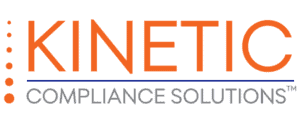In June, the European Commission released Revision 4 of MEDDEV 2.7/1 Clinical Evaluation: A Guide for Manufacturers and Notified Bodies, found amidst other guidance documents here. The release constitutes a major re-write of the previously issued guidance (found here), increasing the document from 46 to 65 pages of “how-to” conduct the Clinical Evaluation. Though not legally binding as a “guidance”, this is the document the respective Notified Bodies use to evaluate a manufacturer’s Clinical Evaluation in audits and guidance documents are ‘expected to be followed’ per the Commission.
What is a Clinical Evaluation?
The EU’s required Clinical Evaluation is an effort required for obtaining and maintaining a medical device’s CE Marking (with the exception of IVDs, which are subject to other requirements). It is applicable to all device classifications. Depending on the device that a manufacturer is CE Marking, the Clinical Evaluation typically involves either a comprehensive literature evaluation, generation and analysis of pre-market clinical data (clinical study) or some combination of these two, the output of which is a Clinical Evaluation Report. If and once a device is post-market, the Clinical Evaluation is required to be updated with post market surveillance data (customer complaints, recalls, and other sources of information regarding on-market devices). The purpose of the effort is to document the clinical safety and performance of the device, as well as ensure that any known clinical risks are identified and mitigated appropriately.
So what’s different in the updated (Revision 4) guidance?
On a positive note, the guidance is more instructive. However, it is also more prescriptive, potentially allowing for less flexibility. Where vague guidance was previously given, much more detailed requirements are now called out. The expectation of increased rigor is palpable. Those involved in evaluating a manufacturer’s data and literature must disclose conflicts of interest and meet specific professional requirements. Specific Essential Requirements and a more detailed way to meet them are called out.
From my perspective, Revision 4 puts additional emphasis on making the evaluation an ongoing effort through the entire device’s life cycle. It seems the Clinical Evaluation Report has become a reflection of the culmination of medical device design efforts. From risk management, verification / validation and clinical data to complaint handling, post market surveillance and usability, all themes present in today’s medical device design are pulled into this guidance as important to consider in the Clinical Evaluation.
And quite notably, device equivalency, which was previously seen as a way to avoid collection of pre-market clinical data (where appropriate to do so), is now required to be based on a single device. The previous guideline allowed for more flexibility in this regard. The EU’s updated requirements around evaluating device equivalency echo China CFDA’s implementation of recent clinical evaluation guidelines – both in regards to the use of a single equivalent device for comparison and in the method of comparison, which involves demonstrating clinical, technical and biological attributes are equivalent. Once equivalency is drawn, literature related to the comparison device can be considered relevant and valid. One impact with this change may be the potential for an increase in clinical data necessary for initial CE Marking.
Ultimately, the modifications presented in the guidance will impact both manufacturers seeking an initial CE mark, as well as those maintaining an existing CE mark. Between the EU’s upcoming anticipated release of the Medical Device Regulations and changes to guidelines like these, it seems the regulatory barrier to entry in the EU could be getting higher than in years past.
If you have any questions on this article, do not hesitate to reach out via email to the author Robin Martin of Kinetic Compliance Solutions, LLC TM: robinmartin@kineticcompliance.com. Kinetic Compliance Solutions, LLC partners with companies to provide legal and regulatory consulting solutions in the highly regulated medical device and life sciences industries.
This article represents the author’s views based on experience, in addition to publicly available information. Content in this article is not intended to be legal advice.

